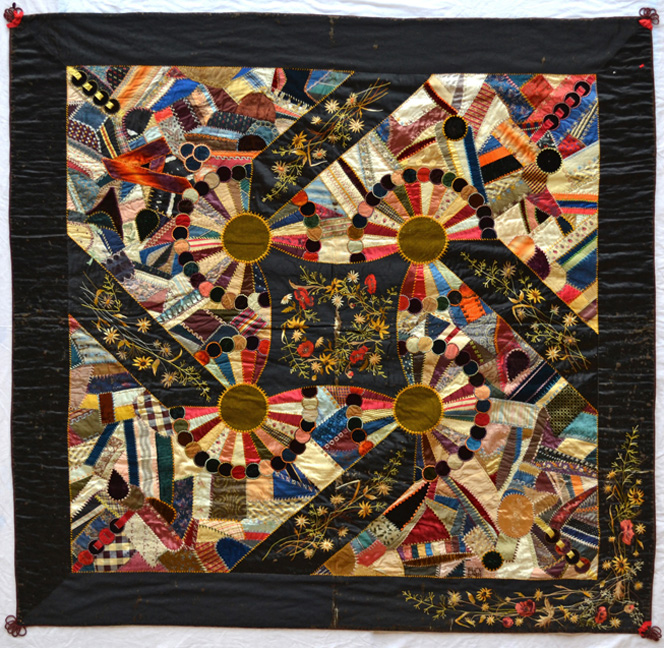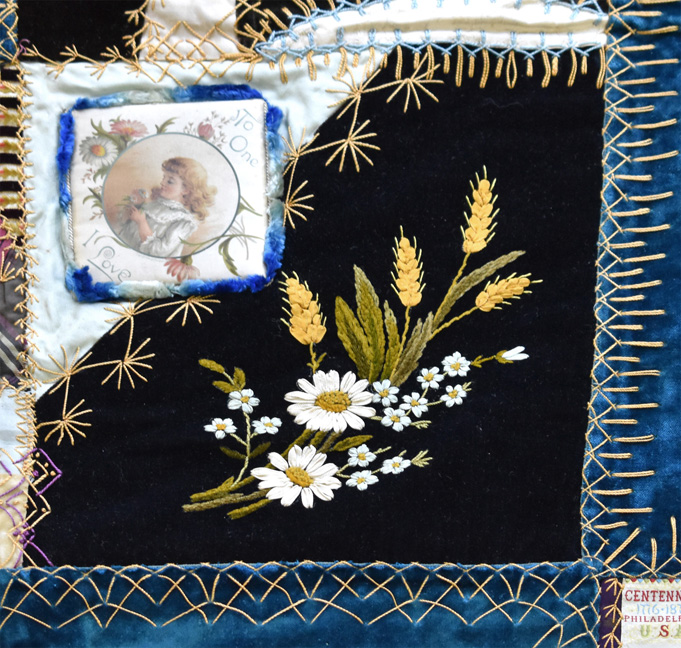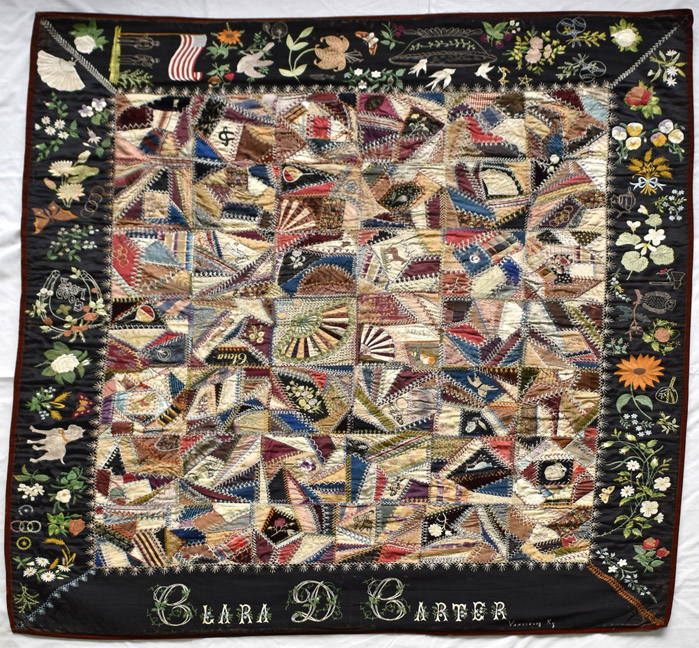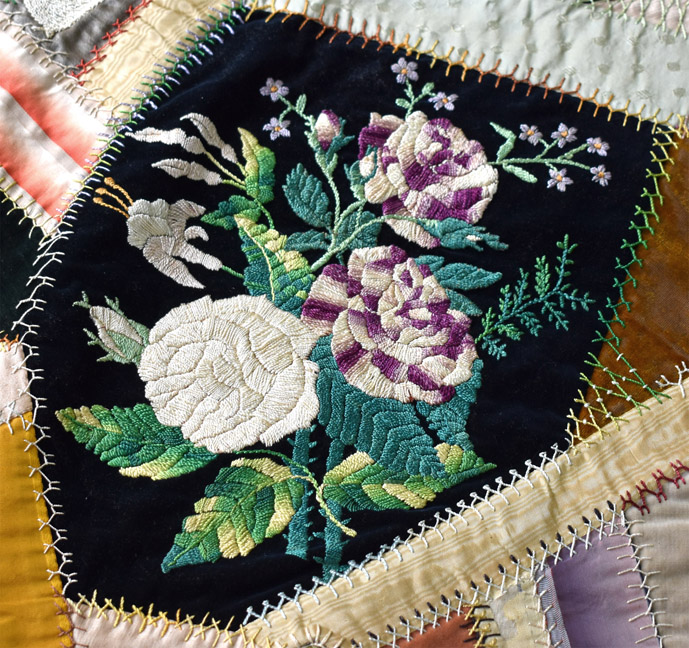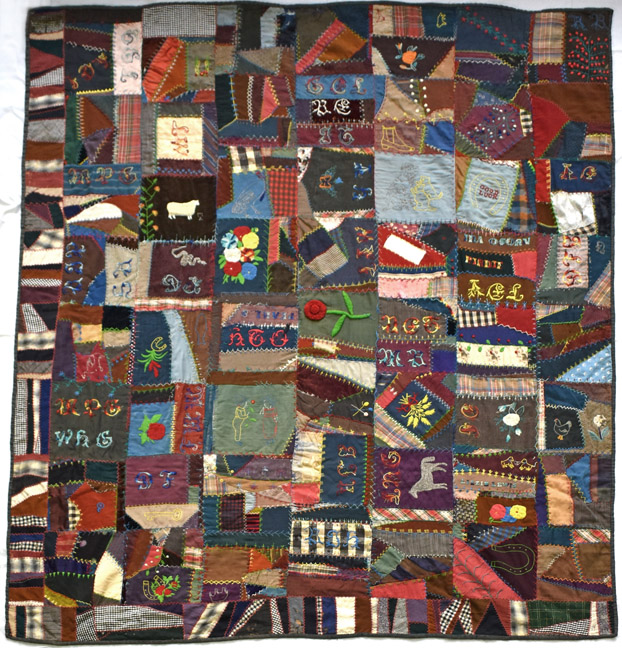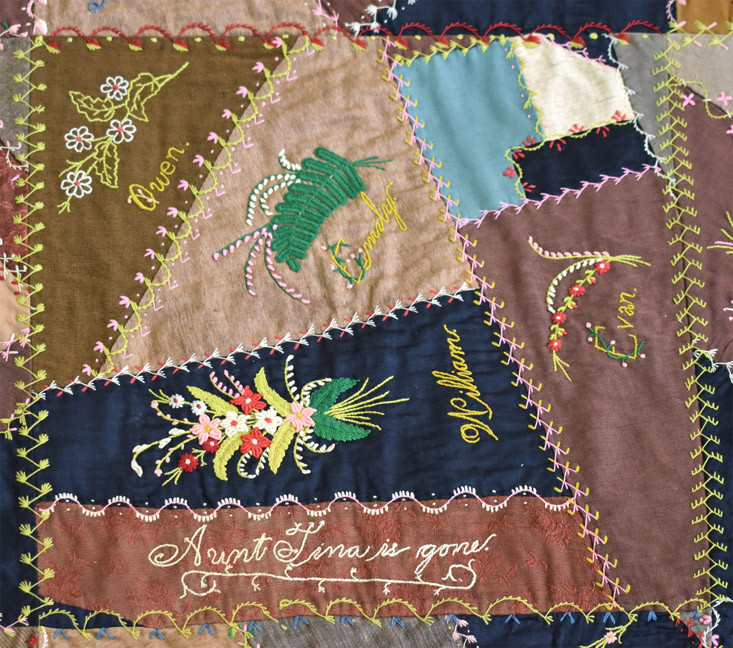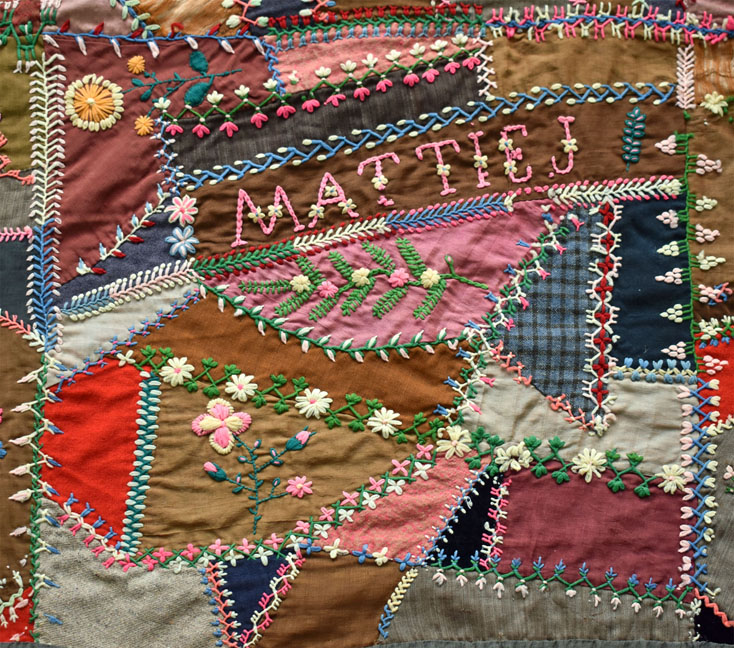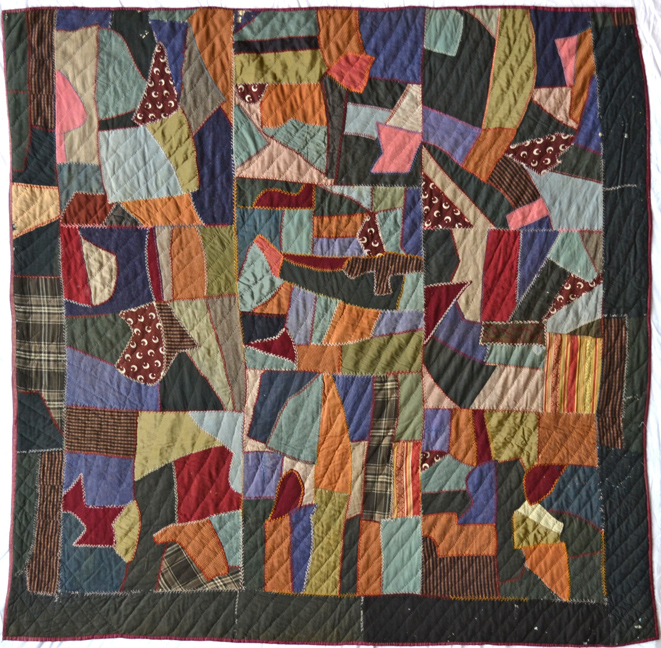Crazy Quilt Mania
April 16, 2022 - July 29, 2023
Crazy quilts emerged in the United States during the late nineteenth century. Stitchery from London’s Royal School of Art Needlework as well as the display of Japanese arts and crafts at the Philadelphia Centennial Exhibition of 1876 inspired women across America to take up their needles in new and different ways. Significantly, the authors of the household décor literature associated with the resulting Art Needlework movement were not the first to promote crazy quilts. Rather, as quilt historian Virginia Gunn has noted, these textiles “emerged as a grass roots response to Aesthetic Movement fashions.” By 1884, the fad for crazy quilts was so great that terms such as ‘mania’, ‘maddening’, ‘maniacal’, and ‘insanity’ appeared with regularity in newspaper and magazine articles.
Crazy quilts appealed to urban and rural women alike. Unquilted and therefore technically not quilts at all, they consisted of randomly shaped and sized pieces of fabric that were attached to a foundation layer and then embellished with decorative embroidery that covered the seams. Realistic and naturalistic embroidery motifs, ribbons, and pre-embroidered appliques often provided additional surface decoration. In the 1880s, scraps of brightly colored silk, taffeta, and brocade were the fabrics of choice. Towards the end of the following decade, woolens in a limited palette of muted, darker colors gradually replaced luxe fabrics in popularity, individual pieces became larger, and the use of embroidery was increasingly limited to stitches that disguised the seams. After 1900, the renewed interest in patchwork coincided with the rise of the Colonial Revival and Arts and Crafts movements, and fashion tastemakers declared crazy quilts unfashionable. Even so, some women continued to make them.
Whatever the origins of these textiles, the phrase “crazy quilt” holds a prominent place in the vocabulary of Americans. During this era, crazy quilts were the subject of poems and stories, and newspapers of the era used the term frequently to describe the weather, sporting events, theatrical productions, and political contests. Even today, most Americans form a mental picture of something that is seemingly random or chaotic when the term “crazy quilt” is used.
The exhibit, Crazy Quilt Mania, examines the above trends through the exhibition of 23 crazy quilts selected from the Kentucky Museum collection. In addition to crazy quilts, this exhibit includes examples of textile and non-textile fancywork as well as numerous fancywork illustrations and advertisements from the period.
Some of the links on this page may require additional software to view.


